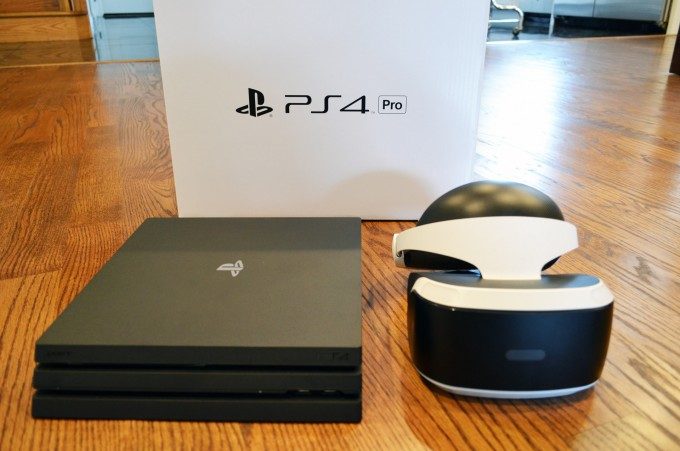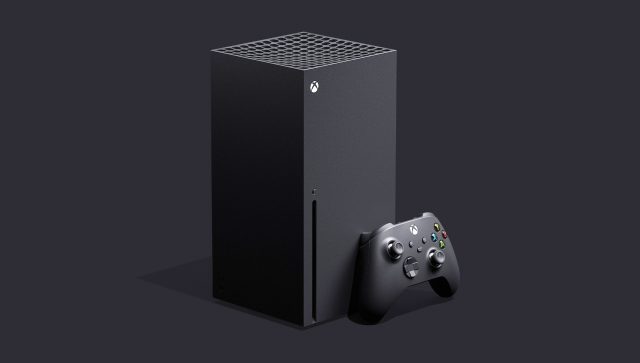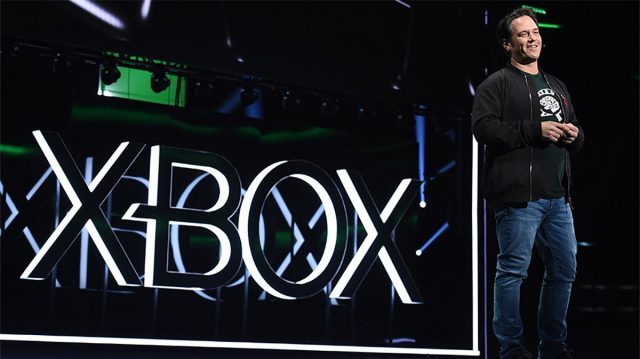Cliff B Tells Xbox Gamers to Not Bite the Hand That Feeds
VR may still be young, with an install base still small compared to the world of traditional gaming consoles, but it can't be ignored that mounting sales of the Playstation VR headset—effectively a very expensive PS4 accessory—is adding up to considerable revenue. In a generation where PS4 has maintained a significant install base lead (and PS5 set to support VR when it launches later this year) pressure is mounting for Microsoft to figure out its Xbox VR strategy.
Update (June 25th, 2020): Article updated with Sony's latest official sales figures for PS4 (106 million) and PlayStation VR (5 million), which were announced in January, and the latest movements (or lack thereof) of VR on Xbox.
Moving the Needle

Sony's official figures put PS4 sales (including PS4 and PS4 Pro) at 106 million units as of the end of 2019. Microsoft meanwhile hasn't publicly revealed their Xbox One sales figures for some time, though recent estimates put it somewhere around 50 million units. Competitively, that's a massive gap. And it isn't helping Microsoft that, for gamers on the fence between the two consoles, PlayStation has a big fat check mark in the VR column while Xbox doesn't.
That's going to continue to be the case for PS5 vs. Xbox Series X, as Sony has already confirmed that their next-gen console will continue to support PSVR, while Microsoft has affirmed that VR isn't a priority for Xbox Series X.
It isn't just the weight of VR support that could be furthering PlayStation's edge, there's revenue to be considered too. PSVR's install base might not be huge relative to PS4, but it's an expensive device—often even more expensive than the console that powers it—bringing the company considerable additional revenue.
Earlier this year Sony officially reported that the PSVR install base has reached 5 million units. The headset has been sold in various configurations since launch, with Sony lowering prices over time from the original $500 Launch Bundle to today's bundles priced around $350. The company has also run aggressive sales each holiday shopping season since the headset launched.
Roughing out a $400 average selling price for the first 2.5 million units and a $300 average for following 2.5 million, we can estimate that Sony has generated nearly $1.75 billion in revenue from PSVR hardware alone.
Software revenue on top of that stands to add considerably more. As of August 2018, Sony said it sold 21.9 million PSVR games, which at the time was an average of 7.3 games per headset at the time.
We can use that figure to extrapolate a more recent count of games sold (based on the latest 5 million headset milestone); we end up with an estimate of 36.5 million PSVR games sold. If we figure a conservative $15 for each title, that's another $547 million in revenue generated by PSVR software (some of which goes to Sony and some to developers).
Bringing all together, we can estimate that PSVR hardware and software has generated $2.3 billion in revenue. Not all of that revenue goes to Sony (some goes to developers, distributors, etc) but it's still a significant market that the company has proven to exist.
$2.3 billion is a lot… though not a huge amount in comparison to revenue from the PS4 console itself (which is in the tens of billions), but it's definitely a needle-moving figure—and a new revenue stream that Xbox isn't tapping—that furthers Sony's console lead. Pressure is mounting Microsoft to figure out how its VR plans pan out on Xbox.
A False Start for VR on Xbox

Back when it was first introduced at E3 2016, Microsoft made a clear point to talk about how their latest console (at the time) Xbox One X would "lead the industry into a future in which true 4K gaming and high-fidelity VR are the standard, not an exception."
It was even announced thatFallout 4VR (later released in 2017 for PC VR headsets) would be coming to the system. Hardly more than a month later, Xbox head Phil Spencer was giving mixed messages about VR support on Xbox One X.
In 2017 it became clear that the console wouldn't have any type of VR support at launch, and in 2018, after the console's launch, Microsoft further affirmed it had "[no] plans specific to Xbox consoles in virtual reality or mixed reality."
Microsoft Says "Nobody is asking for VR" on Xbox Series X

By now it's clear that Xbox One X will never see VR support. But what about Microsoft's latest and great, the Xbox Series X? The company still hasn't changed course after its initial VR flip-flop.
In late 2019, Xbox head Phil Spencer doubled down on his decision to steer clear of VR on Xbox. Speaking toStevivor, he said he doesn't see the demand to warrant supporting VR on Xbox Series X.
"I have some issues with VR—it's isolating and I think of games as a communal, kind of together experience. We're responding to what our customers are asking for and… nobody's asking for VR."
"Nobody's selling millions and millions" of VR units, he added. That's a choice quote, considering that Sony has managed to sell an average of around 1.35 million PSVR units per year since the headset's launch, and announced that it had topped 5 million units by the end of 2019.
Missing Synergy

The announcement and then retraction of VR as a prominent feature on Xbox One X is an oddity. Especially because Microsoft is already well established as a player on the PC side of VR.
The company executed an impressive rollout of their 'Windows Mixed Reality' VR platform on PC in late 2017, which saw the launch of Windows VR headsets from a slew of PC hardware vendors, and a big update to Windows 10 which baked VR directly into the operating system.
With the Xbox Series X being the most PC-like Xbox console to date (ostensibly with an OS based on Windows 10), and Microsoft having already build its own VR platform based on Windows 10, the lack of coordination between these two facets of Microsoft is almost painful. Oh, and did we mention that Xbox Game Studios is teeming with VR talent?
But it may take more than platform synergy and demand to bring VR to Xbox Series X.
In a candid interview in mid-2017, Xbox Head Phil Spencer suggested that Microsoft was staying away from VR on Xbox because they didn't feel that the family room is a good place for tethered headsets. He figured at the time that the industry is "a few years away [from a wireless VR solution]."
So far that hasn't panned out; while HTC sells an official Vive wireless adapter, it's expensive and requires users to mount additional hardware. To date, no other major headset maker has introduced a wireless headset or wireless accessory—though reliance on a tether hasn't stopped Sony and others from selling headsets.
If Microsoft is planning on waiting for seamless wireless VR tech before rolling out a VR offering on Xbox, they risk handing away a couple billion more dollars in extra revenue to a competitor which has maintained a sizeable lead in console sales over the last generation.
Source: https://www.roadtovr.com/xbox-one-x-vr-missing-strategy-playstation-vr-psvr-revenue/
0 Response to "Cliff B Tells Xbox Gamers to Not Bite the Hand That Feeds"
Publicar un comentario